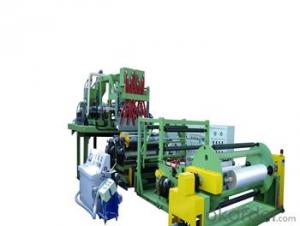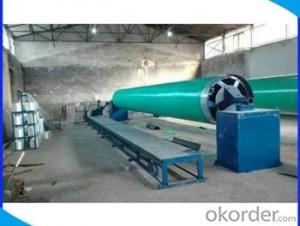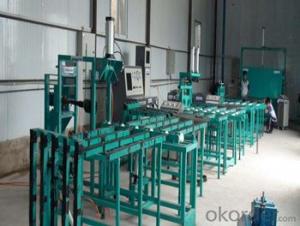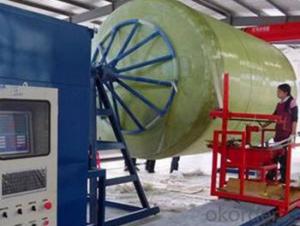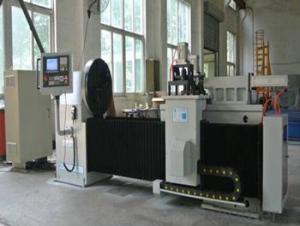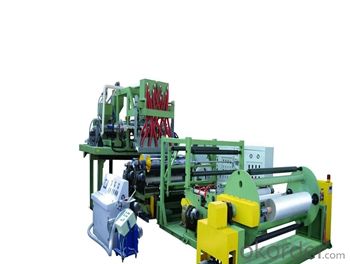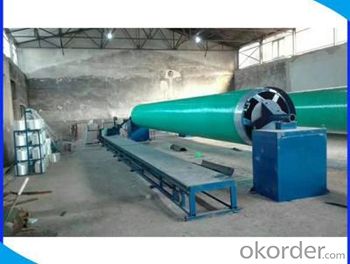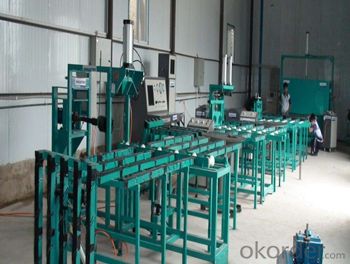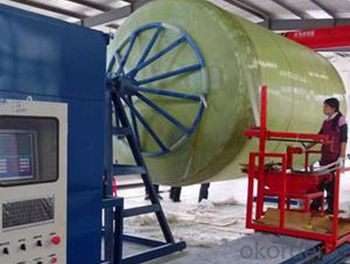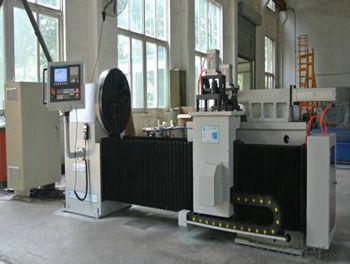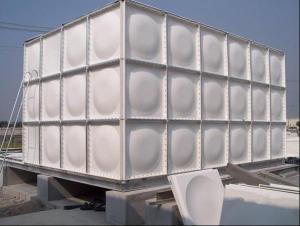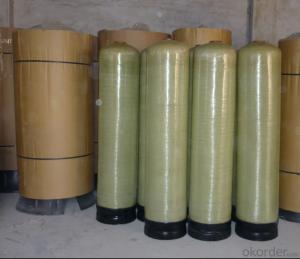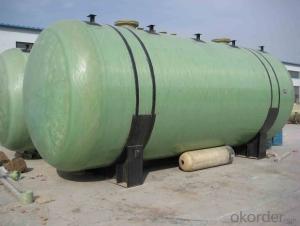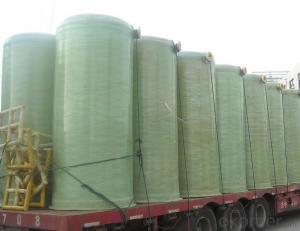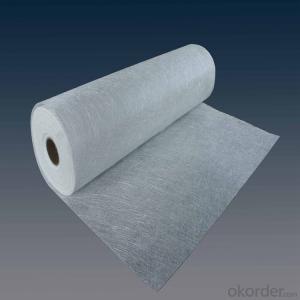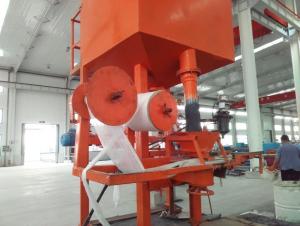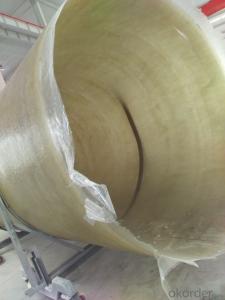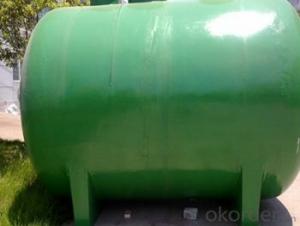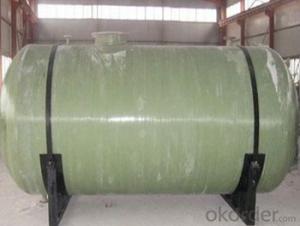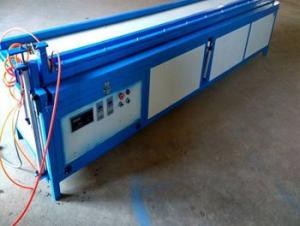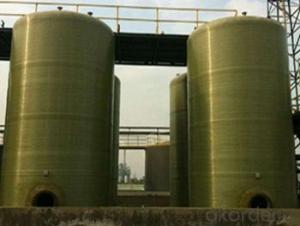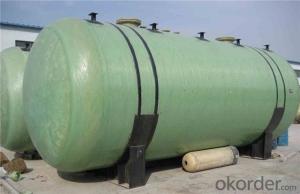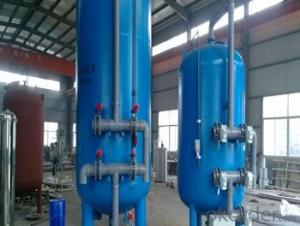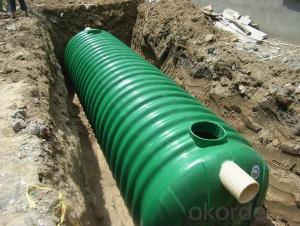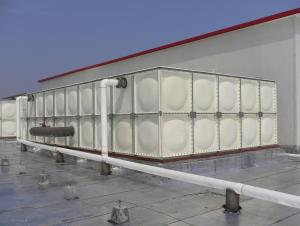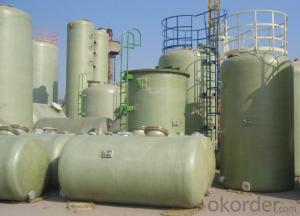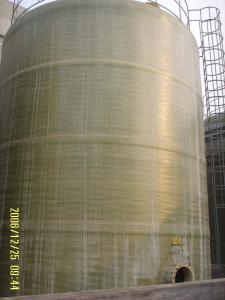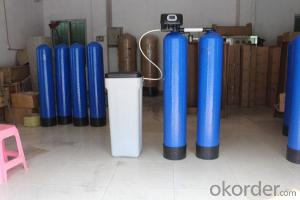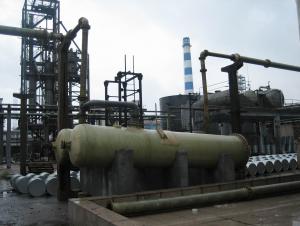40 Lb Composite Propane Tank with High Mechanical Inertness FRP Tanks and Vessels New Design
- Loading Port:
- Tianjin
- Payment Terms:
- TT OR LC
- Min Order Qty:
- 1 m.t.
- Supply Capability:
- 50000 m.t./month
OKorder Service Pledge
OKorder Financial Service
You Might Also Like
INSTRUCTION
FRP tanks and vessels can be largely used in many areas of the light industry, petroleum, chemical, food brewing, transportation and so on. Such product can resist the corrosion of various acids, alkalis and salts.
CHARACTERISTICS
• High mechanical strength
• High mechanical inertness
• Resistance to weathering
• Low thermal and electrical conductivity
• Long Life
• Non-toxicity
• No need for maintenance
• Light weight
DESIGN PHILOSOPHY
The correct structuring of any kind of G.R.P. tank consist of three distinct types of layers:
• Chemical Resistant Layer
• Mechanically Resistant Layer
• Outer Protective Layer
OTHER DESIGN CONDITIONS
• Working pressure, Vacuum
• Support span
• Working temperature
CHEMICAL RESISTANCE
Resistance to corrosion in aggressive environments is one of
the primary reasons for specifying GRP tanks. These, resists a
wide range of chemicals and temperatures and can be built to
provide additional abrasion, weathering and fire resistance. The
chemical resistance of GRP tank depends primarily on the resin/
glass matrix used. Other factors can affect laminate resistance
including liner construction, cure, and fabrication methodology
and installation techniques.
General corrosion, galvanic, aerobic, pitting, dezincification,
graphitic and intergranular corrosion harm metals but not GRP.
PRODUCTION RANGE
FRP small-scale storage tank: Diameter ≤ 4M
Large-scale jobsite winding vertical storage tank: Diameter 4200mm-25000mm
EXECUTIVE STANDARD
FRP small-scale storage tank
JC/T587-1995 (Glass fiber reinforced plastic storage tank)
Large-scale storage tank
HG/T3983-2007 Industry standards of Chemical Corrosion-resistant jobsite Winding FRP Large-scale storage tank
HG/T20696 Design Requirements of FRP Chemical Equipment
COMPANY INTRODUCTION
CNBM, China National Building Materials Group is a state-owned enterprise in charge of administrative affairs in china building materials industry. Established in 1984, CNBM is a large group corporation of building materials with total assets of 25 billion RMB and a total staff of 30,000.CNBM now owns 200 subordinating firms of solely owned and joint-venture companies.
CNBM International Corporation is one subsidiary of CNBM, we focus on offering good-quality products, professional service and complete solution to our customers. Strong delivery capacity, advanced technology
& management, strong financing capability and excellent after-sale service are our advantages in sharing international market.
PICTURE S
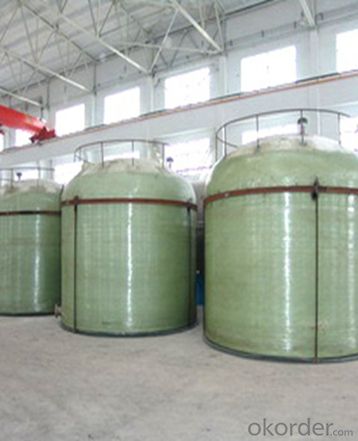
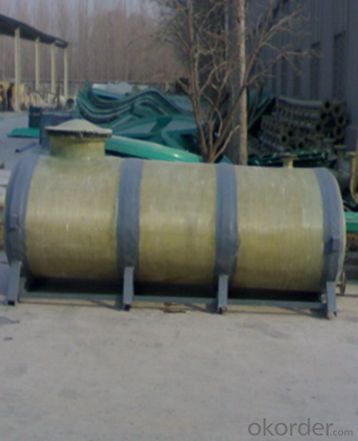
- Q: What are the manufacturing processes of FRP tanks?
- The use of computer-controlled winding machines to complete this process will increase the SME investment in the project, thereby limiting the promotion of the project. Therefore, this paper designed and developed a mechanical fiber winding such products winding machine, winding machine successfully solves the problem of such products to ordinary fiber winding around the jar the root of the problem, to meet the users of the equipment of high quality and low price requirements. In tension, tension is applied and controlled to control the amount of glue contained, to arrange the yarn evenly and to exhaust the air in the yarn so as to reduce the void. After the end of the winding, the excess glue on the surface of the tank is scraped and solidified.
- Q: How can the glass storage tank be treated with moss?
- The diluted sulfuric acid empty, then ash evenly into the tank, the ash and mud acid curing, acid gas tank to be dissipated after ventilation, remove plaster, and then adding alkali solution and alkali washing.
- Q: How can the 800*1200 stainless steel tank be protected from corrosion?
- Stainless steel tanks are usually made of epoxy because of their corrosion resistance, stability and good results. Before use, reasonable proportioning should be carried out first, and then corrosion prevention of stainless steel tanks can be carried out.
- Q: How can the glass steel tank mould be made?
- 2000 cubic meters of glass reinforced plastic tanks, the cost of making a single mold is very high, and can find FRP manufacturers to site winding. If you insist that you can only use the mold with mold
- Q: How much can glass steel cans do?
- Due to the characteristics of FRP cans, FRP cans are widely used in the chemical, environmental, food, pharmaceutical, printing and dyeing industries, and gradually replace the majority of carbon steel, stainless steel market areas.
- Q: What are the technical standards for FRP tanks?
- It is usually composed of four layers: inner surface layer, inner layer, strength layer and outer surface layer. Other layered structures may also be adopted according to requirements; the wall thickness of the tank shall be based on the design requirements.
- Q: How can we produce qualified FRP tanks?
- 1 out of mould2, pre production, post production3 installation
- Q: How long is the service life of FRP tanks?
- Rigorous tests abroad have proved that the service life of FRP tanks can be up to 50 years. Since the introduction of Italy technology and equipment in 1986, the first batch of FRP tanks have been used in China so far.
- Q: What are the advantages of FRP tanks?
- FRP tanks with corrosion resistance, high strength, light weight, long service life, because of its can be designed flexibly, process features strong, flexible design can be used in different industries such as chemical industry, environmental protection, food, pharmaceutical and other industries, is gradually replacing carbon steel, stainless steel parts market
- Q: Why leakage occurs during the use of FRP tanks?
- In general, there may be two possibilities, namely, bad production and nonstandard use
Send your message to us
40 Lb Composite Propane Tank with High Mechanical Inertness FRP Tanks and Vessels New Design
- Loading Port:
- Tianjin
- Payment Terms:
- TT OR LC
- Min Order Qty:
- 1 m.t.
- Supply Capability:
- 50000 m.t./month
OKorder Service Pledge
OKorder Financial Service
Similar products
Hot products
Hot Searches
Related keywords
